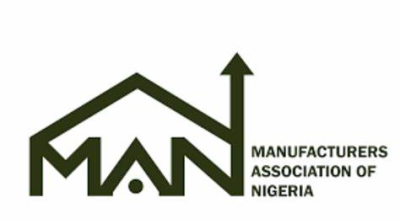Manufacturers’ Unsold Inventories Hit N1.4trn In 2024
Nigeria’s severe economic challenges including rising inflation, depreciating currency, and operational inefficiencies have left the manufacturing sector with N1.4 trillion worth of unsold goods.
The huge inventories underscore the sector’s woes in 2024 after its contribution to Nigeria’s Gross Domestic Product (GDP) declined to 12.68 per cent in the second quarter of 2024 from the 16.04 per cent recorded in the fourth quarter of 2023.
The President of the Manufacturers Association of Nigeria (MAN), Francis Meshioye, speaking at the Ninth edition of the MAN’s Media Personality Award, attributed the unsold goods and the declining contribution to GDP to multiple factors that significantly hampered production, sales, and overall economic contribution.
He highlighted that the sector’s struggles mirrored broader macroeconomic issues, including high inflation, surging energy costs, and declining purchasing power.
“Inflation, which peaked at 34.6 per cent in November 2024, was central in reducing consumer demand and weakening purchasing power, resulting in substantial unsold inventories”, he said.
“The sharp rise in the cost of goods led many Nigerians to prioritise necessities, further shrinking the demand for manufactured products and diminishing the sector’s GDP contribution”.
Meshioye also pointed to the devaluation of the Naira as a critical factor in the sector’s struggles. The local currency depreciated significantly, from ₦666 per dollar in mid-2023 to over ₦1700 by mid-2024.
“This currency instability inflated the cost of importing raw materials and machinery, further squeezing manufacturers’ profit margins and reducing their ability to produce competitively”.
Another challenge the sector faced in 2024 was the soaring cost of borrowing, with interest rates reaching a record 27.7 per cent in November.
The prohibitive cost of credit curtailed manufacturers’ ability to finance operations, expand capacity, or modernise facilities.
This led to stagnation and further constrained the sector’s GDP contribution.
Additionally, energy costs surged dramatically in 2024, with electricity tariffs increasing by over 250 per cent.
“Many manufacturers were forced to explore alternative energy sources, which strained financial resources and reduced operational efficiency. The rising energy costs, with an inconsistent power supply, exacerbated manufacturers’ challenges, limiting their capacity to compete locally and internationally.
Despite these challenges, Meshioye expressed optimism about the sector’s potential recovery in 2025, projecting a gradual rebound in GDP contribution to between 13 and 14 per cent by the end of the year.
He emphasised stabilising the exchange rate as a cornerstone of recovery efforts.
He commended the Central Bank of Nigeria’s (CBN) introduction of the Electronic Foreign Exchange Matching System (EFEMS) in late 2024, which he believes will help stabilise the forex market.
According to Meshioye, if effectively managed, EFEMS could stabilise the Naira within the range of ₦1500 to ₦1650 per dollar in the first quarter of 2025, alleviating some of the cost pressures associated with imports.
Meshioye also underscored the transformative role of technology in revitalising the manufacturing sector.
He called for greater investment in artificial intelligence (AI) and automation, which he argued could enhance production efficiency, optimise capacity utilisation, and modernise supply chains.
He noted that these advancements are critical for restoring the sector’s competitiveness and increasing its contribution to GDP.
The MAN President urged the government to address critical policy and infrastructural gaps, stressing that inconsistent policies have deterred investment in the sector.
He highlighted the need for improved infrastructure, particularly in transportation, which would reduce production costs and ensure efficient movement of goods.
Meshioye also called for swift implementation of tax reforms and a downward review of electricity tariffs to alleviate manufacturers’ financial burdens.
In addition to policy interventions, Meshioye emphasised the importance of promoting local sourcing of raw materials and enhancing agricultural productivity. The sector, he said, could minimise exposure to exchange rate fluctuations and stabilise production costs if dependence on imported inputs is reduced.
He also called on the CBN to clear the backlog of foreign exchange obligations, which has created liquidity challenges for manufacturers.
Meshioye reiterated the critical role of manufacturing in driving Nigeria’s economic growth, emphasising that a stable macroeconomic environment, coupled with investments in technology and infrastructure, could restore the sector’s vibrancy and contribution to GDP.
“A thriving manufacturing sector is essential for economic growth, job creation, and improved living standards for Nigerians,” Meshioye said.
He expressed confidence that with collaborative efforts between policymakers and industry stakeholders, the manufacturing sector could overcome its challenges and contribute significantly to Nigeria’s economic recovery and development in 2025.


